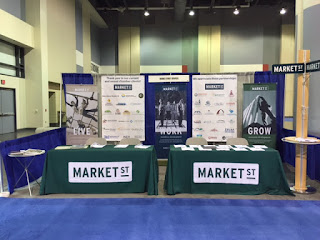By Stephanie Allen, Project Assistant
This year I bought all of my Christmas presents online. All of them. I am a person who LOVES Christmas shopping. Some of my favorite memories are of Christmas shopping in Woodstock, NY, where all the little shops had hot cider and cookies, where there were carolers and pine boughs and often snow, and where you could find all sorts of unique gifts from local artisans and crafters. Back in the early 2000s, I never dreamed of Christmas shopping online. I bought a few textbooks online and a CD or two, but now I buy almost everything online from books to dog food to paper towels to handmade pottery, used records and vintage clothes. I’ve even used a few different apps for same-day grocery delivery.
Why would Christmas be any different? To be honest, buying online takes much of the joy out of Christmas shopping for me. But, it’s just SO convenient. And, as far as the rest of the year goes, I don’t even feel like I’m missing anything—I prefer to shop online. Apparently I’m not alone. This year Black Friday online sales were up 21.6% over the same day last year. According to the census bureau, online sales for the third quarter of 2016 were up 15.7% from the third quarter 2015. And, retail foot traffic is declining. In 2013, total retail foot traffic in November and December was down to 17.6 billion from over 30 billion in 2010.
All of these online sales have lead to a changing physical landscape in cities and suburbs across the country. There is less demand for retail space. Suburban shopping centers have been especially hard hit. From 2010 to 2015, more than a dozen shopping malls closed. In 2015, 15% of the nation’s 1,200 malls were between 30 and 50% vacant. And, currently, more than 60 malls across the country are considered on the brink of death. As we continue to make more and more of our purchases online, we will likely see fewer brick and mortar retail operations.
But, that’s not the only change we’ll see. We’re making fewer driving trips for shopping and while that may mean low occupancy rates for retail parking lots or less traffic in retail shopping centers, it also means an increase in freight traffic. According to a recent U.S. Department of Transportation study, our online shopping will be a major contributor to a 45% increase in freight traffic by 2040. It also means an increase in residential neighborhood traffic by delivery men. Yesterday, the mailman brought packages to my door, as did the UPS guy, the FedEx guy, and the OnTrac guy.
Our communities will need to plan for these changes. We’ll need to make room on our roads for more freight traffic and perhaps make attempts to divert some of that traffic to other modes. We’ll need to make plans for dying malls and empty strip malls as well as their expansive parking lots. And, until drone delivery becomes more commonplace and/or driverless vehicles become part of our freight delivery system, we’re going to need more drivers and more warehouse workers and fewer retail employees.

















